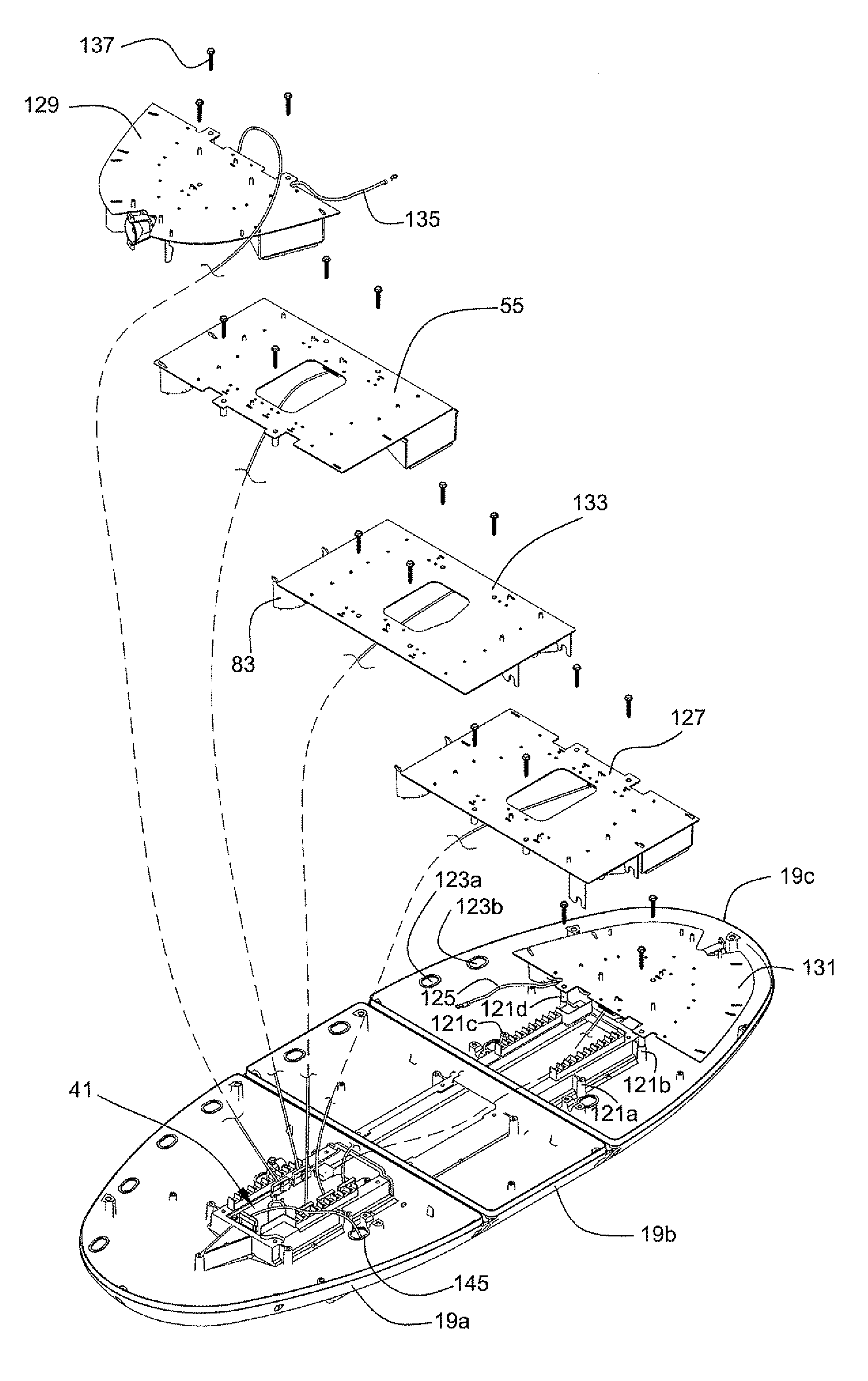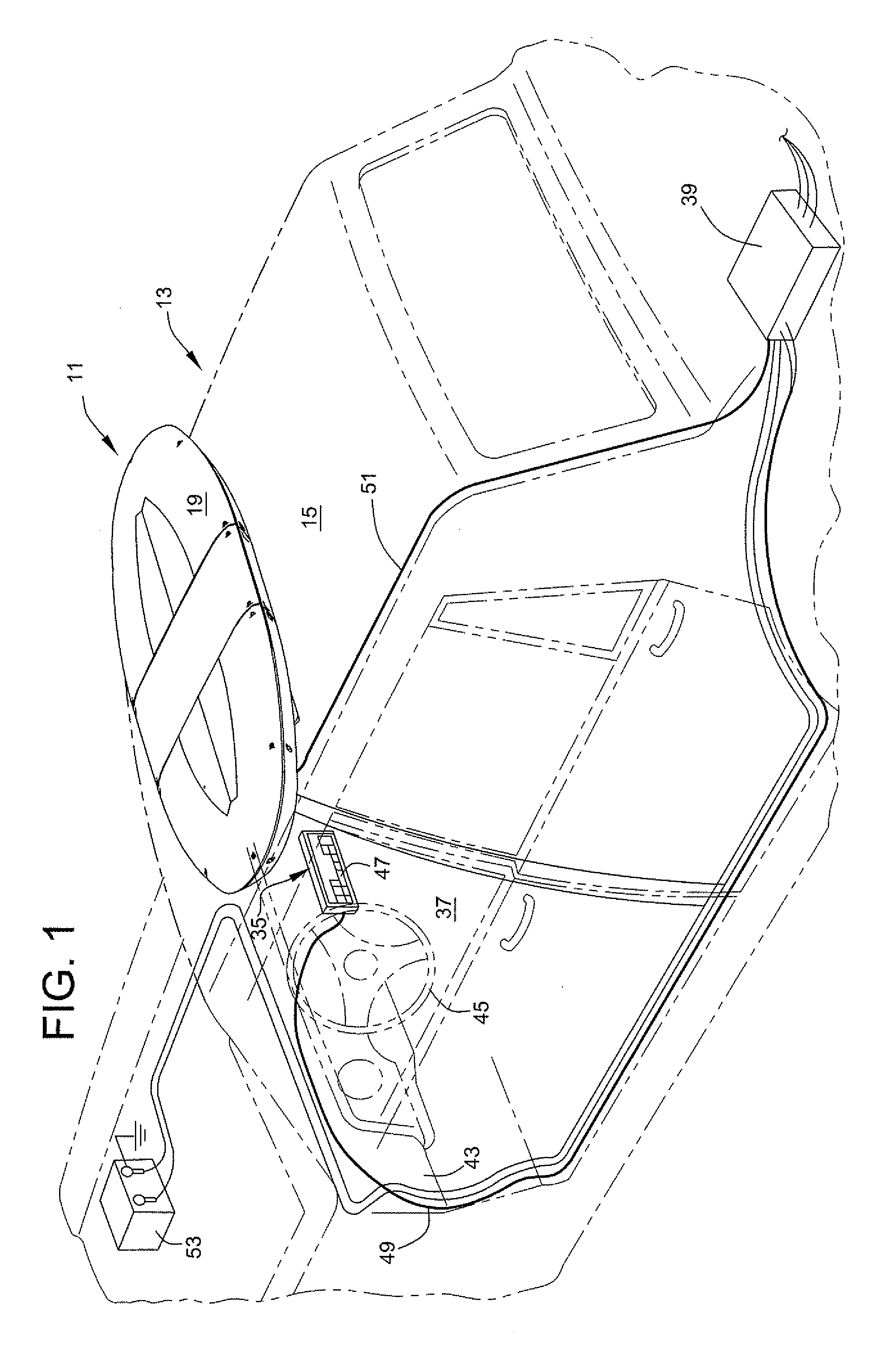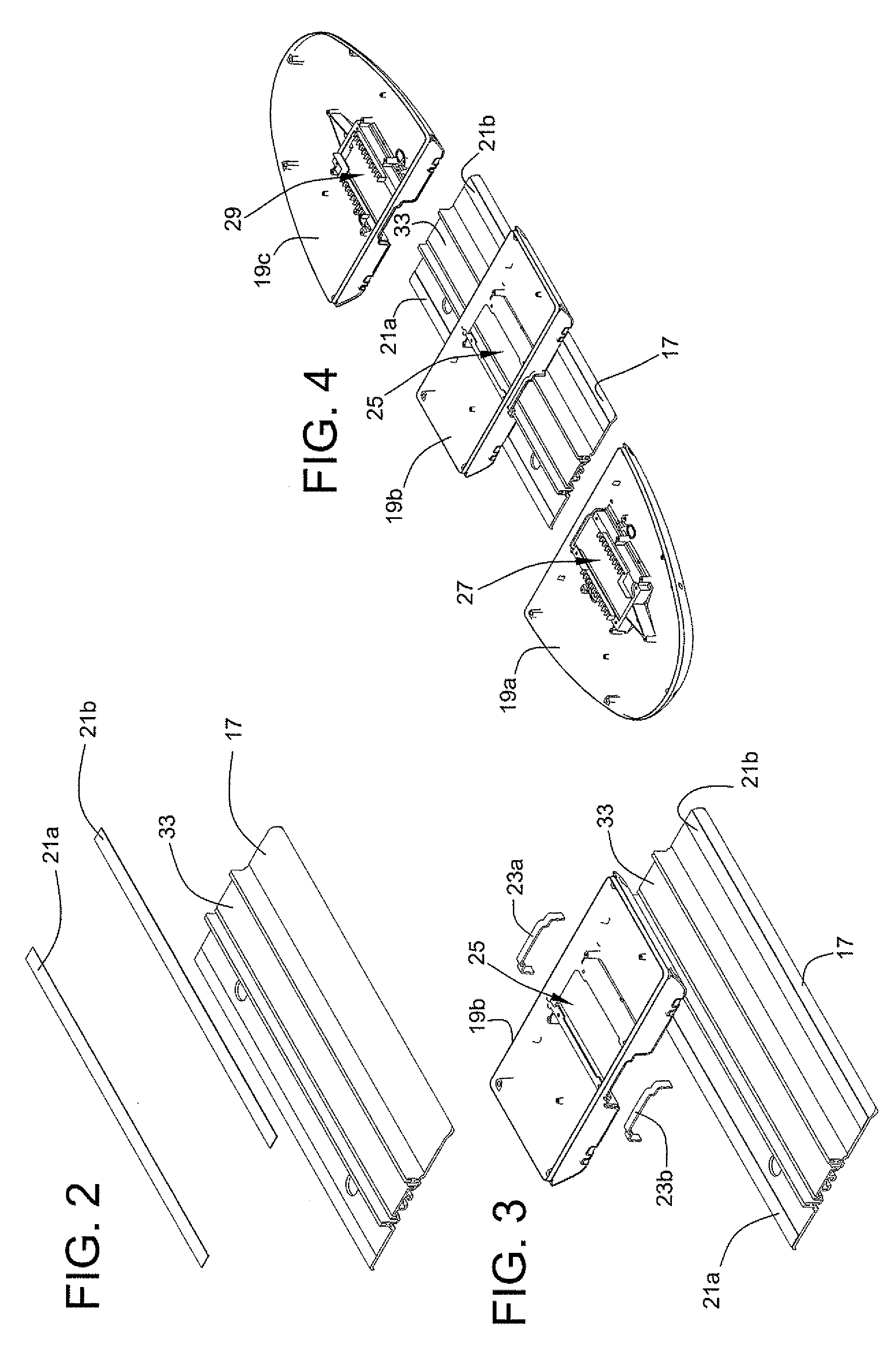Light bar and method for making
a technology of light bars and assembly methods, applied in the direction of lighting and heating apparatus, coupling device connections, lighting support devices, etc., can solve the problems of high risk of manufacturing process errors, dense wiring scheme in interiors, and high interior complexity, so as to reduce the amount of loose wiring and ensure reliability and repeatability. the effect of registration
- Summary
- Abstract
- Description
- Claims
- Application Information
AI Technical Summary
Benefits of technology
Problems solved by technology
Method used
Image
Examples
Embodiment Construction
[0036]Turning to the drawings and referring first to FIG. 1, an emergency signaling system 11 according to a preferred embodiment of the invention is installed in an exemplary emergency vehicle 13 shown in broken lines. The system 11 includes a plurality of light beam assemblies or signaling devices best shown in FIGS. 6 and 7. The emergency signaling system 11 is mounted to a roof 15 of the vehicle 13.
[0037]Emergency signaling systems of the type mounted to the roofs of emergency vehicles are commonly called “light bars” because they are typically shaped as a bar traversing the vehicle's roof. In keeping with this convention, the illustrated emergency signaling system 11 is hereinafter referred to as a “light bar” since it is primarily intended for mounting to the roofs of emergency vehicles such as the roof 15 of the illustrated vehicle 13. However, those skilled in the art will appreciate that the manufacturing technique described hereinafter for the illustrated light bar is appl...
PUM
 Login to View More
Login to View More Abstract
Description
Claims
Application Information
 Login to View More
Login to View More - R&D
- Intellectual Property
- Life Sciences
- Materials
- Tech Scout
- Unparalleled Data Quality
- Higher Quality Content
- 60% Fewer Hallucinations
Browse by: Latest US Patents, China's latest patents, Technical Efficacy Thesaurus, Application Domain, Technology Topic, Popular Technical Reports.
© 2025 PatSnap. All rights reserved.Legal|Privacy policy|Modern Slavery Act Transparency Statement|Sitemap|About US| Contact US: help@patsnap.com



